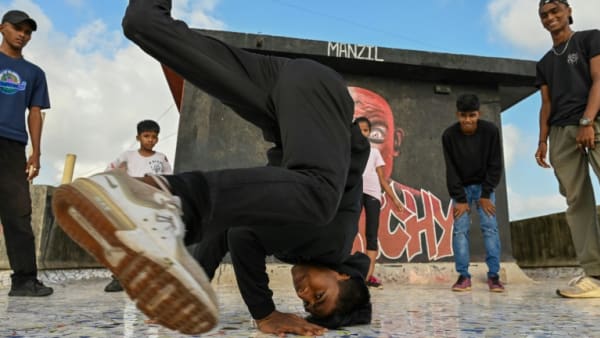Hip-hop dream thrives in Indias largest slum
 "MY CONFIDENCE LEVEL WAS ZERO"
"MY CONFIDENCE LEVEL WAS ZERO"The school opened its doors in 2015, offering free classes in breakdancing, beatboxing and rapping to around 20 students, with digital media start-up Qyuki - Rateshwar's employer - and US entertainment titan Universal Music Group footing the bill.
As the project won praise from musical icons such as Oscar-winning composer A R Rahman it rapidly expanded, with young students like Joshua Joseph - now better known as MC Josh - using hip-hop to tell their stories.
If black rappers in the United States could shine a light on racism, he reasoned, hip-hop could do the same for India's glaring inequality and mistreatment of marginalised communities.
"My confidence level was zero before I started to rap," the 21-year-old told AFP.
"The school changed my life."
When COVID-19 arrived, the rapper's income collapsed overnight as Dharavi was put under a stringent months-long lockdown.
Mumbai authorities quickly realised that the slum held the key to defeating the pandemic and launched Mission Dharavi - aggressively sanitising communal toilets, running daily "fever camps" to check for symptoms, repurposing wedding halls as quarantine facilities, and asking residents to stay home.
By the end of June 2020, Dharavi had recorded 82 deaths - a fraction of Mumbai's more than 4,500 fatalities.

0 Response to "Hip-hop dream thrives in Indias largest slum"
Post a Comment